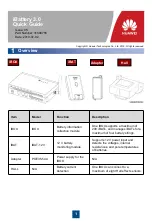
Panel controls
CK88 CK61 Owner’s Manual
13
&
[MENU] button
For calling up the screens for making overall settings
(page 36).
Simultaneously press the [ENTER] and [MENU] buttons
to switch the panel lock on or off (page 42).
*
[ENTER] button
For confirming the parameter value or each operation.
By holding down the [ENTER] button and operating
other buttons or knobs, you can use shortcut
operations (page 42).
(
VALUE buttons
Encoder dial
For changing the currently selected parameter value.
In the MENU and SETTINGS screens, use the encoder
dial to move the cursor (or highlight) up and down.
A
[SPLIT] button
For selecting the Split settings.
Pressing the button turns on the Split function, and
each time you press the button, the settings change
alternately in the order listed below.
The lamp is on while the Split setting is selected, and
the lamp is off while the Split setting is deselected, and
the Layer setting is selected.
The Split setting can be changed from the [SETTINGS]
button
Sound
Common
Layer/Split
Mode
(page 30).
B
[SPLIT POINT] button
For viewing the screen for changing the Split Point or
the lowest note on the right section.
Turn the Encoder dial or simply press the key you wish
to assign as the Split Point.
Settings made here are stored in the Live Set Sound.
NOTE
• The Split Point can be set by simultaneously pressing the [SPLIT
POINT] button and the key you wish to assign as a Split Point.
• The Split Point can be changed from the [SETTINGS] button
Sound
Common
Layer/Split
Split Point
C
CATEGORY buttons
For selecting a Voice from the Voice Category to use for
the Part.
Every time you press the same button, the cursor
moves to the next Voice in the same Category. Quickly
pressing the button twice displays the Voice list.
The Organ voices using the Organ Flutes tone
generator (H, V, F, A, and Y) are available from the
[Organ] button. These voices can be set using the
ORGAN FOOTAGE sliders, PERCUSSION buttons, and
VIBRATO/CHORUS buttons.
Settings
Descriptions
A/BC
Part A on the left section and Part B and C on the
right section of the keyboard
AB/C
Part A and B on the left section and Part C on the
right section of the keyboard
A/B/C
Part A on the left section, Part B on the center
section, and Part C on the right section of the
keyboard
ABC
Voices on Part A, B, and C are layered
Types
Descriptions
H
A distinctive electric organ from the 1960s,
characterized by sine-like waveforms that are simple
yet warm. This type of organ was used in many genres
of music, such as rock, pop, and jazz.
V
A transistor organ from the 1960s. With harmonic
content very close to that of a square wave, it had a
sound of great presence. This type of organ was often
used in psychedelic rock and ska.
F
A transistor organ from the 1960s. This type of organ is
notable for its thick sound with the sawtooth
components boosted in volume. It was often used in
60s pop music and alternative pop of the 90s.
A
A transistor organ made in Japan during the 1970s. This
type of organ was notable for a bright sound similar to
that produced by the sawtooth waveforms of a
synthesizer.
*
(
D
E
&
K
L
O
P
M
J
N
^
C
I
$
%
Содержание CK88
Страница 1: ...English Français Español ...
Страница 11: ...CK88 CK61 Owner s Manual 5 MEMO ...
Страница 78: ......
Страница 79: ......
















































